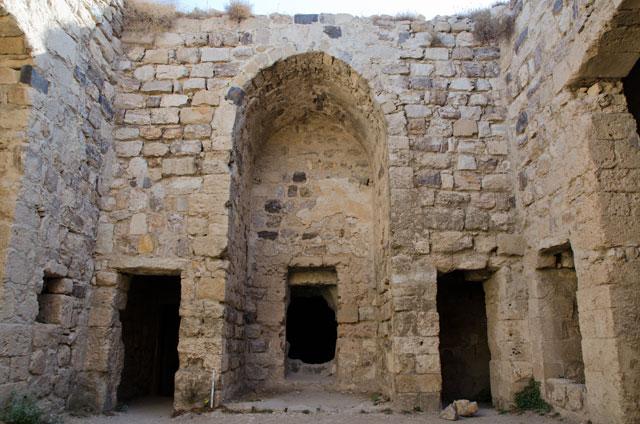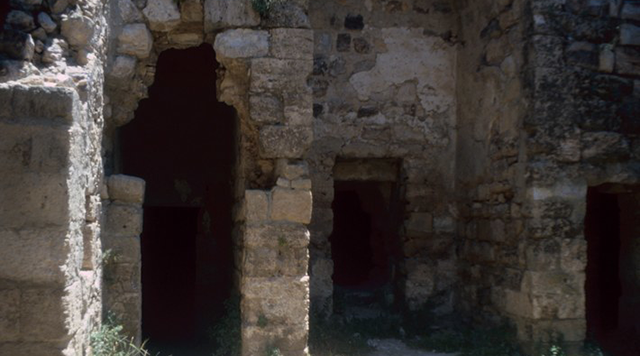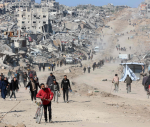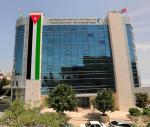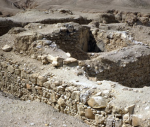You are here
Italian archaeologists believe Karak Castle has more to say
By Saeb Rawashdeh - Sep 18,2018 - Last updated at Sep 18,2018
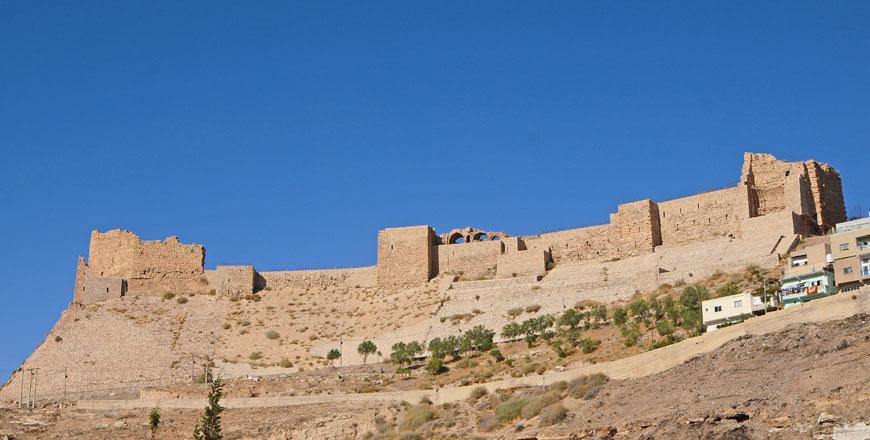
Karak Castle is the largest Crusader fortress in Jordan built in 12th century (Photo courtesy of Loreuzo Fragai)
Amman — Karak Castle is the most famous Crusader-Islamic military site in Jordan and appears today as a perfect summary of Crusaders’, Ayyubids’ and Mamluks’ architectural military genius, yet, the site has not received enough scholarly attention and some details are still missing, an expert said.
Lorenzo Fragai, a PhD holder from the Sapienza University of Rome and a member of the Italian mission that investigated the site in 2012 told The Jordan Times that “despite the castle’s importance in the historical landscape of 12th-14th centuries, there isn’t yet a detailed architectural survey of the castle, so actually it is not possible to identify which sections of the present structure pertain exactly to these different historical phases”.
He explained that some of the most famous figures of the 12th-14th centuries are connected to the fort: the dramatic and extravagant Crusader lord, Reynald of Châtillon, the Ayyubid Prince Al Nasir Dawud and Sultan of Egypt, Al Nasir Muhammad Ibn Qalawun during the Mamluk domination.
According to the expert, in the 12th century Crusaders re-imposed central authority over central and southern Jordan: from 1110 to 1115 AD and founded in the process a series of “great fortresses across the region that provided a powerful stimulus for Frankish expansion into Jordan”.
The Italian mission also examined three other large castles erected in the south, one in Al Wu’ayra (outside Petra), the other in Al Habis (inside Petra) and the Shobak/ Montreal Castle.
“The construction of Crusader Castle of Karak [‘Kharakh of Moab’, as we can see in the famous Madaba mosaic map of the 6th century, or ‘Petra Deserti’] was started in 1142 at the end of the rule of King Fulk V of Anjou by Pagan the Butler, lord of Oultrejourdain, and gave Frankish authority more reach over southern Transjordan. From this point on, the modern history of Karak [140km from Amman] begins,” he elaborated.
Aftermath
of Hattin Battle
After the Crusaders’ defeat of Hattin in 1187 at the hands of Saladin, all the crusader fortresses of Transjordan surrendered to the Muslim leader in 1188–89, Fragai continued, adding that the capitulation of Karak to Saladin’s forces marks the beginning of seven centuries of Islamic history in these lands.
“From 1188 to 1263 the city was an Ayyubid princedom with different functions like treasury, arsenal and prison, and was ruled by a succession of sultans and princes; some of them were responsible for new constructions and improvements at the Karak Castle,” the archaeologist stated.
“Its monumental reception hall, which I’ve been researching during my PhD course through the application of the methods of ‘light archaeology... is one of the best preserved in the Near East: a building similar [though smaller and, architecturally less refined] to the reception hall at the Shobak Castle, which represents almost certainly its archetype,” Fragai said.
Furthermore, after the conquest of the sultanate by Baybars I (1263-1277) Karak was incorporated into the governmental structure of the Mamluk empire with the other fortified sites of the region, he elaborated, saying that the Mamluk dynasty was crucial for investment activities in Karak and in the rest of Jordan, especially in the field of urban architecture, which included the palace of Sultan Al Nasir Muhammad.
“The palace, which I have been investigating since 2016, is one of the best preserved Mamluk residential buildings in the Near East, located in the lower court of the castle,” Fragai underlined, adding that this palace is most likely the Qalaat Al Nahhas, one of the palaces built by Al Nasir Muhammad in 1311 inside the castle and mentioned in 14th century historical sources.
“Unfortunately, today this building is not only inaccessible, but it is also in danger of collapsing.” Therefore, the scholar said: “I think it is necessary to preserve it and make it useable to visitors and scholars who intend to visit.”
New discovery
Fragai believes that he may have identified a fragment of a previously undiscovered reception hall at the southern end of the castle during his PhD research.
“This ‘new’ reception hall, built where now stands the Great Tower, could have possibly been the heart of a palace commissioned by Sultan Al Adil or by his son, Al Muazzam Isa and was called Dar Al Sultana,” he said, emphasising that right now it is not yet clear how much of this ancient building is actually preserved in the upstanding structures.
“The forthcoming research as a member of the Italian archaeological mission, which will be developed in the next few years, will continue the archaeological study of buildings inside the castle. On this matter, we do not exclude the possibility of starting an archaeological excavation project, in order to clarify some interpretative problems concerning the Ayyubid and Mamluk phases of these palatine complexes,” he concluded.
Related Articles
AMMAN — In 1189, after the victorious siege which started in 1187 and the crusaders’ fall of Hatting, Saladin came into possession of the ca
AMMAN — Despite being one of the best-preserved crusader castles in Jordan and the Near East, Karak Castle is “certainly one of the least st
AMMAN — The Karak Castle has a prominent role in history of crusades and post-crusade Mamluk-Ottoman periods.


